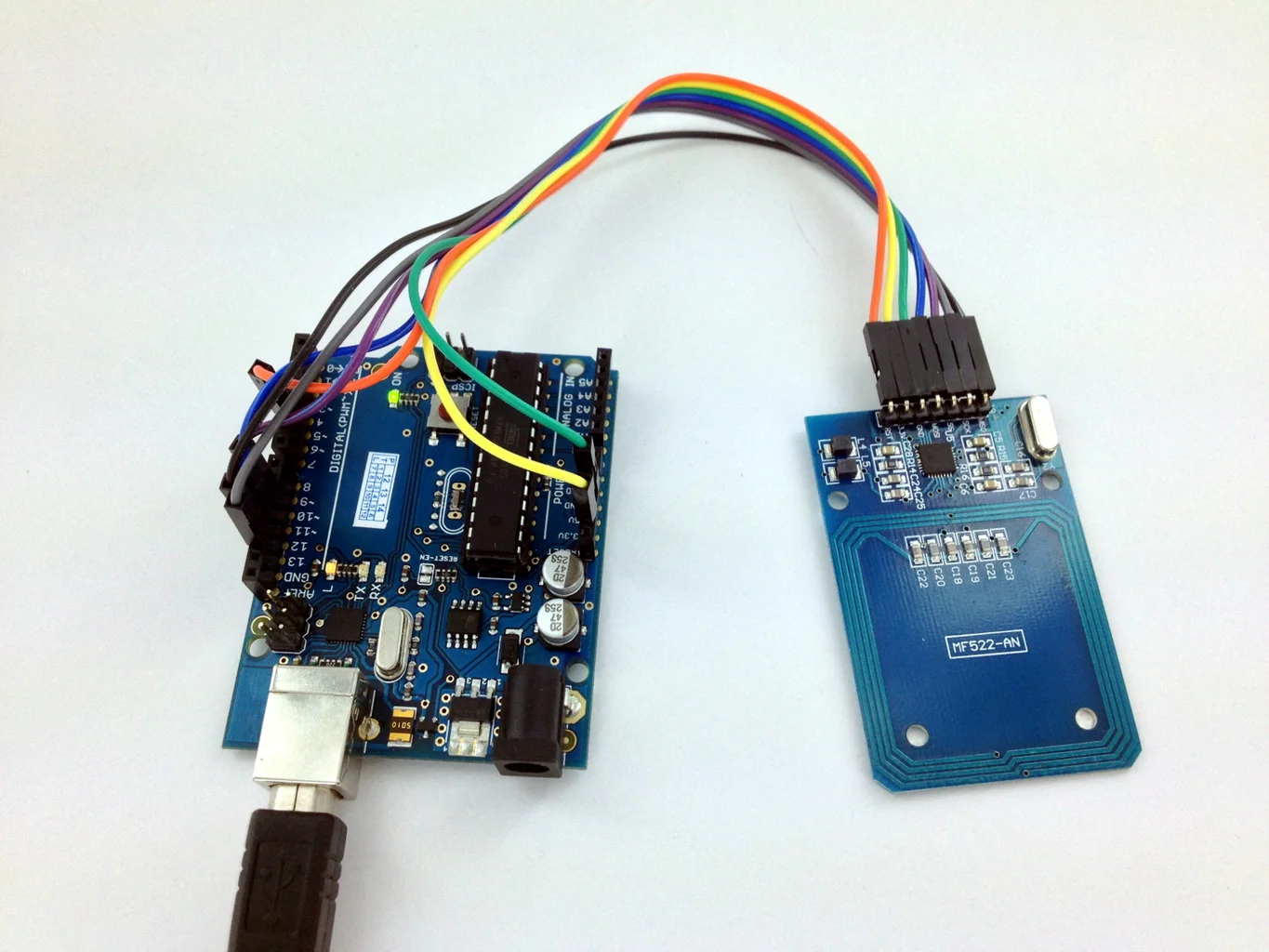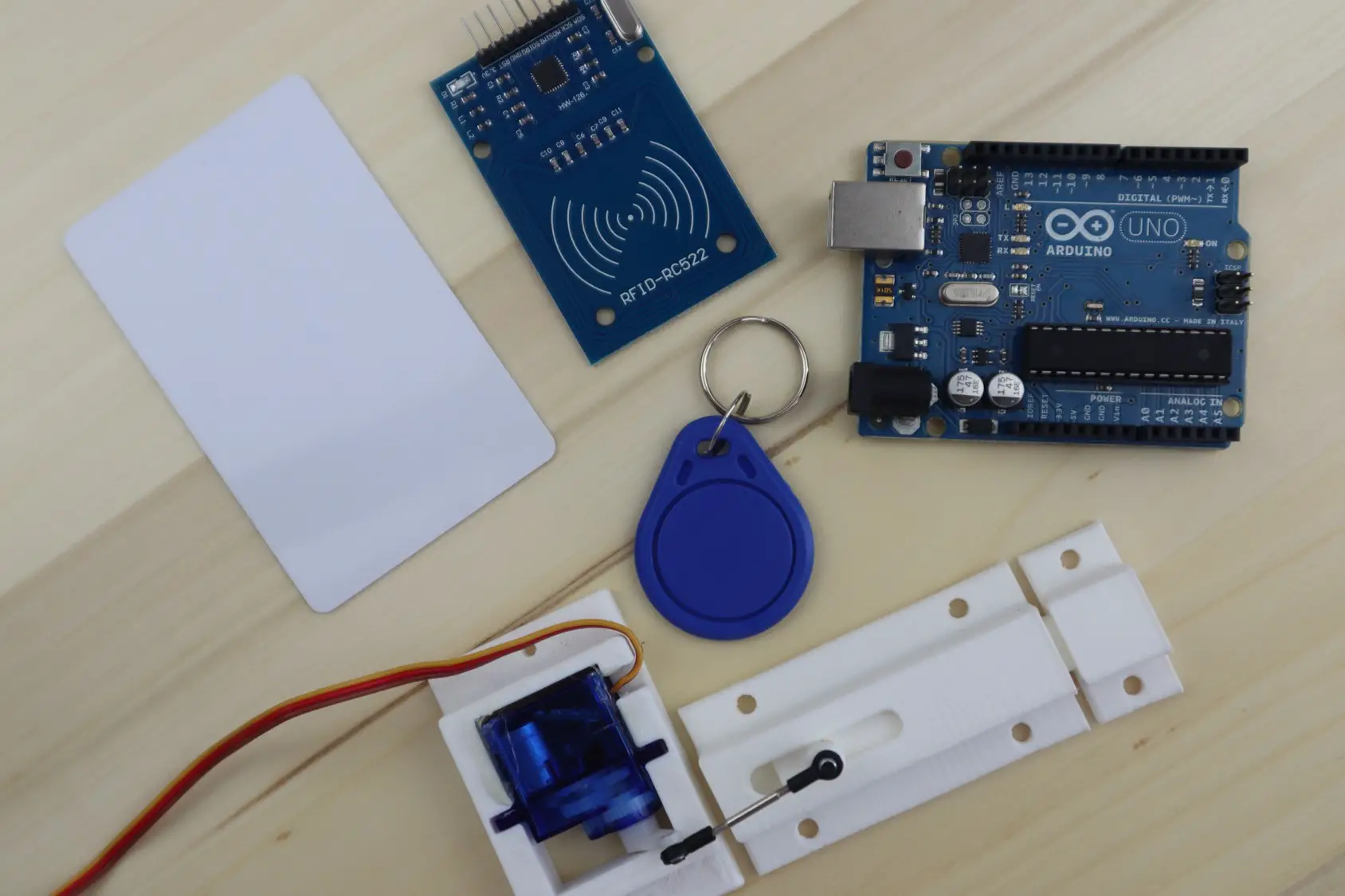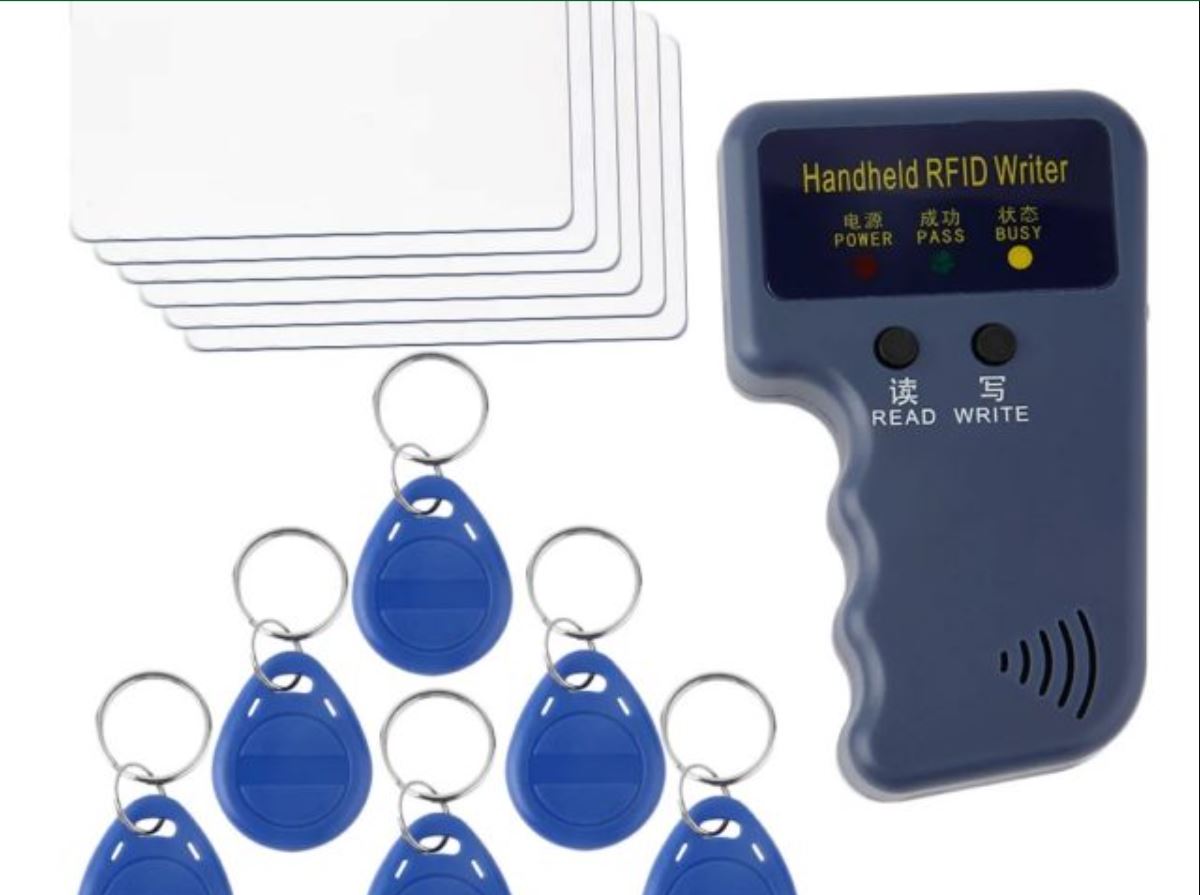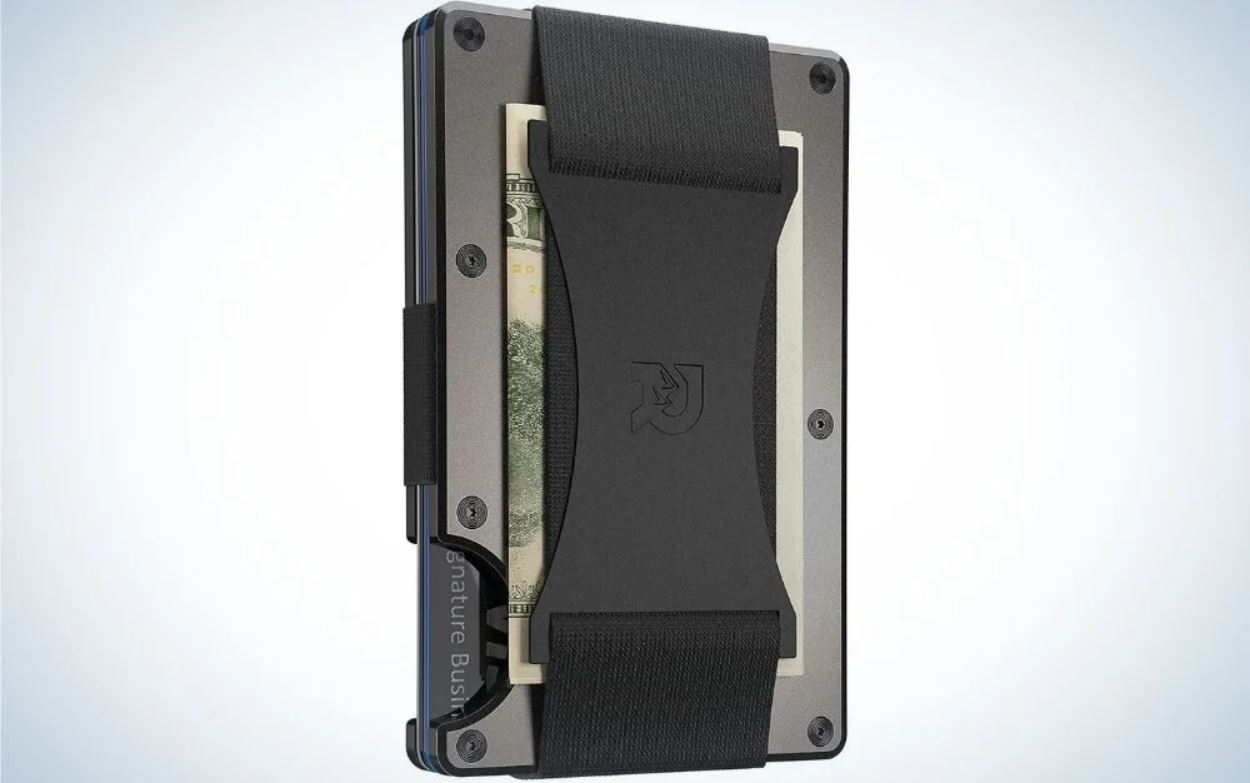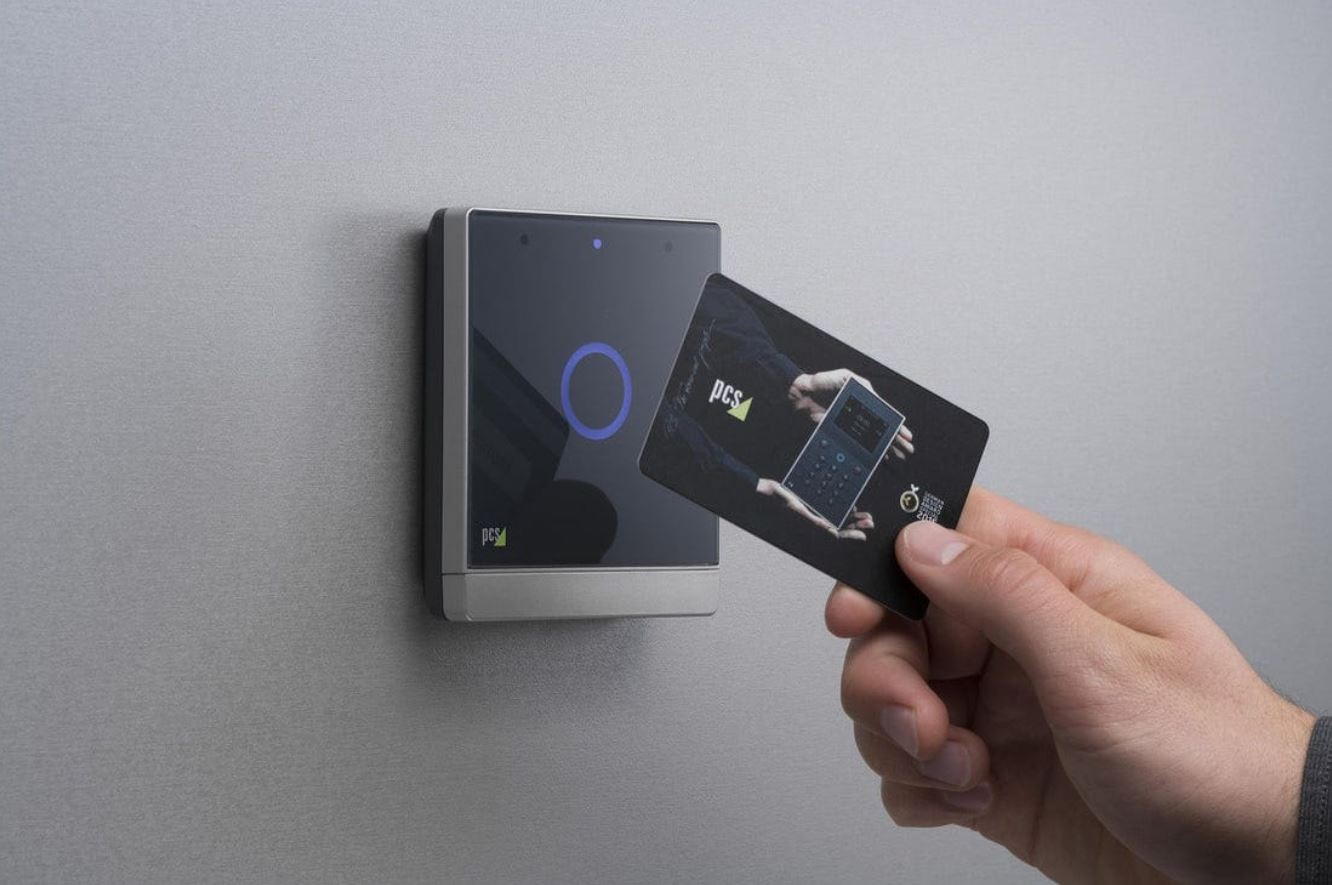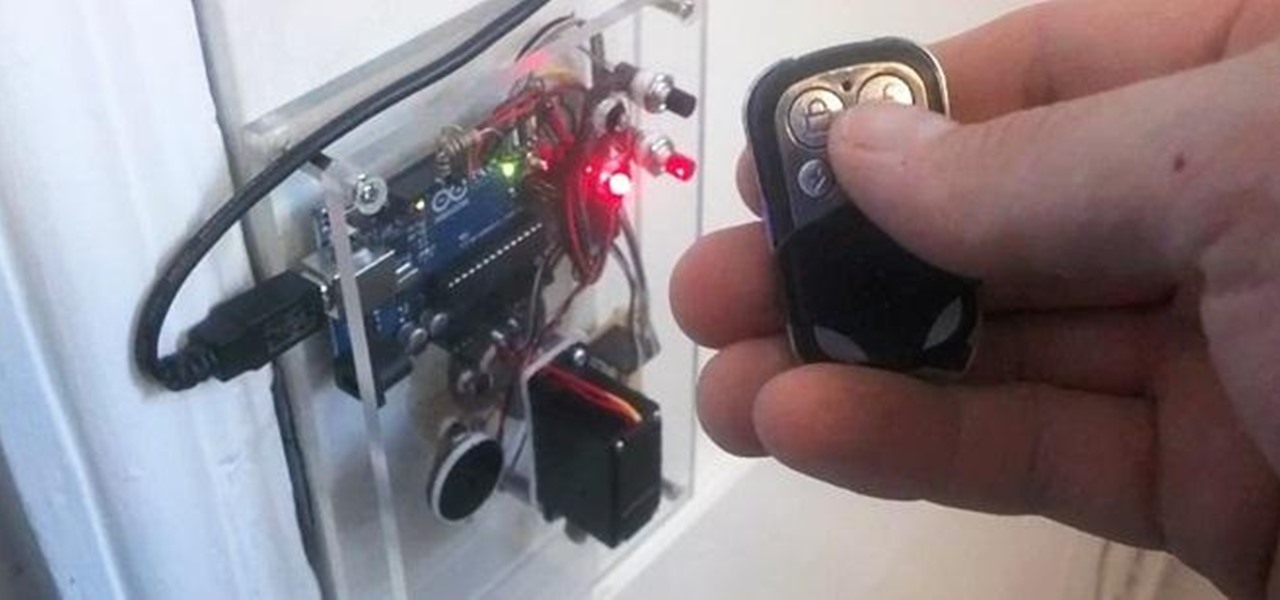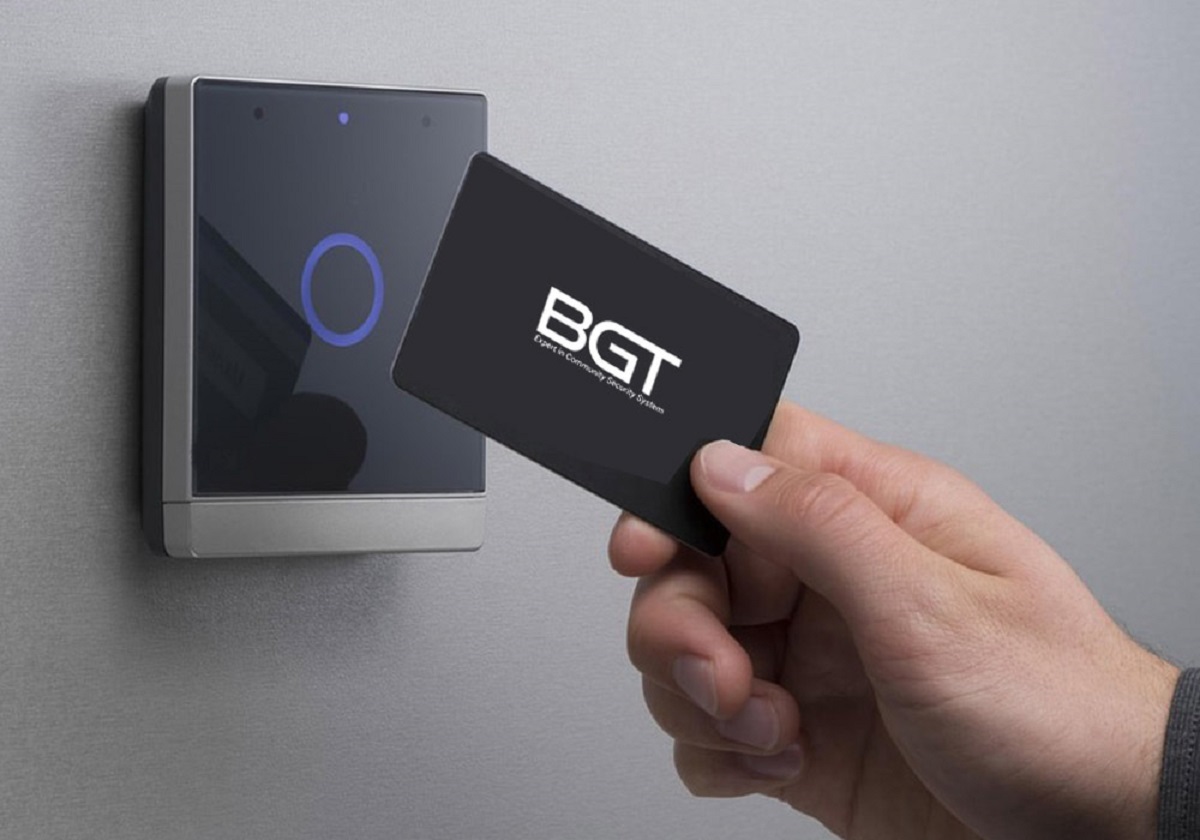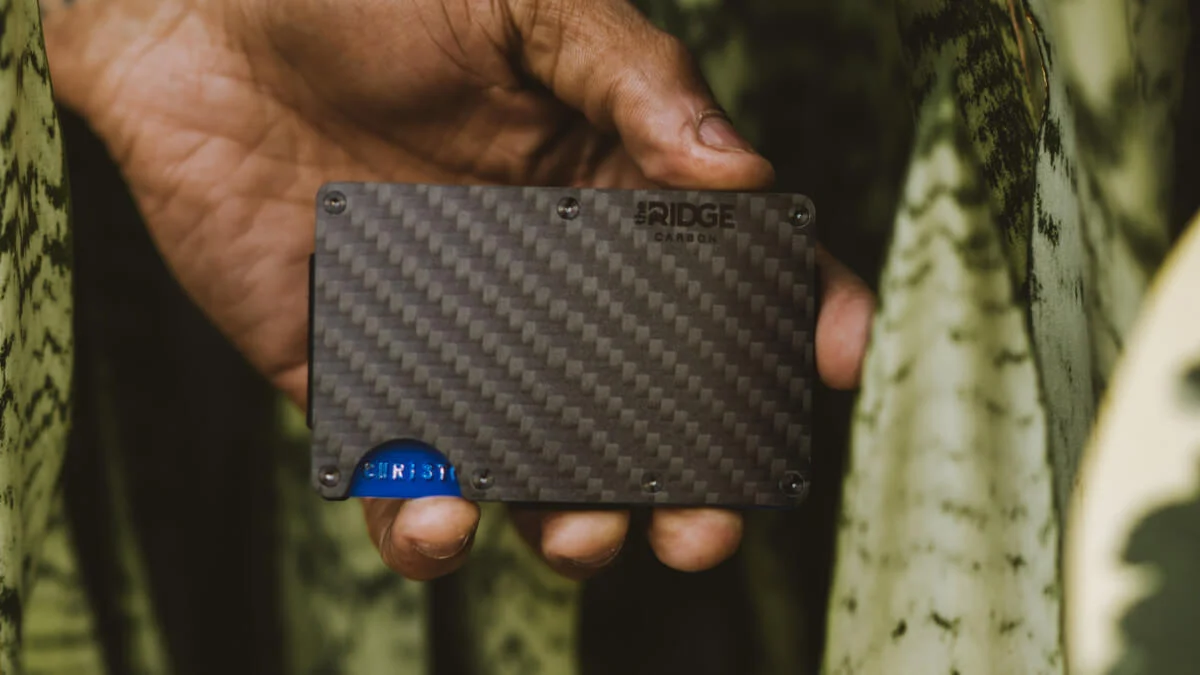Introduction
Welcome to our comprehensive guide on how to program an RFID card. RFID (Radio Frequency Identification) technology has gained widespread popularity in various industries, including access control, inventory management, and transportation systems. Programming an RFID card allows you to customize its functionality and integrate it into your project seamlessly. Whether you’re a hobbyist or a professional, understanding the programming process is crucial for harnessing the full potential of RFID cards.
In this guide, we will walk you through the basics of RFID technology, explain how an RFID card works, and provide step-by-step instructions on programming RFID cards. You don’t need to have any prior programming experience, as we will cover everything you need to know in a beginner-friendly manner. By the end of this guide, you’ll have the knowledge and skills to program RFID cards accurately and troubleshoot any issues that may arise.
But before we dive into the programming aspect, let’s start by understanding what exactly an RFID card is.
What is an RFID card?
An RFID card, also known as a proximity card or access card, is a small-sized card embedded with an RFID chip. RFID technology uses radio frequency waves to transmit data wirelessly between the card and an RFID reader, allowing for contactless communication. These cards are widely used for various applications, including access control systems, attendance tracking, payment systems, and asset tracking.
RFID cards are designed to store and transmit information, similar to how barcodes work. However, unlike barcodes that require line-of-sight reading, RFID cards can be read from a distance without the need for direct visibility. This makes them more convenient and efficient for a wide range of use cases.
The RFID chip within the card contains an integrated circuit that stores data, such as a unique identifier or access credentials. When an RFID card is placed near an RFID reader, the reader emits radio frequency waves that power the chip and activate it. The chip then sends the stored data back to the reader, which can be used for authentication, identification, or data transfer purposes.
The use of RFID technology offers several advantages over traditional identification systems. RFID cards are more secure as they can incorporate encryption and authentication protocols, making them less prone to forgery or duplication. Additionally, RFID cards provide faster and more convenient access, as users do not need to physically swipe or insert their cards, saving time and reducing wear and tear.
Overall, RFID cards have become an integral part of many industries and applications, providing a reliable and efficient means of identification and data transfer. In the next section, we will delve deeper into how RFID cards work and the components they consist of.
How does an RFID card work?
To understand how an RFID card works, we need to explore the interaction between the card and an RFID reader. The RFID card contains a microchip that consists of an antenna and a small memory to store data. When the card comes within close proximity to an RFID reader, a communication process is initiated.
The RFID reader generates an electromagnetic field using radio waves. This field powers the RFID card’s microchip, enabling it to transmit data back to the reader. The communication between the card and the reader occurs through the principle of electromagnetic induction.
When the electromagnetic field from the reader interacts with the antenna of the RFID card, it induces a small electrical current in the antenna. This current powers up the chip, allowing it to send the stored data back to the reader. The RFID card emits a unique identifier or other relevant information, which is then captured by the reader.
The reader receives the data transmitted by the RFID card and processes it accordingly. In access control systems, for example, the reader compares the received identifier with a database of authorized IDs. If a match is found, the access is granted. In inventory management, the reader may update the inventory information based on the data captured from the RFID tags attached to the items.
It is important to note that RFID technology operates at different frequency ranges, including low frequency (LF), high frequency (HF), and ultra-high frequency (UHF). The frequency range determines the distance at which the communication between the RFID card and the reader can occur. LF RFID cards typically have a shorter range, while UHF RFID cards offer longer read ranges.
Overall, the use of RFID cards provides a secure and efficient method of identification and data transfer. The ability to wirelessly transmit data without the need for physical contact or visibility makes RFID cards ideal for various applications. In the next section, we will delve deeper into the components that make up an RFID card.
Understanding the components of an RFID card
An RFID card consists of several components that work together to enable its functionality. Understanding these components is essential for programming and utilizing RFID cards effectively. Let’s take a closer look at the key components of an RFID card.
1. RFID Chip: The RFID chip is the heart of the RFID card. It contains an integrated circuit that stores and processes data. The chip communicates with the RFID reader through electromagnetic induction.
2. Antenna: The antenna is a conductive material embedded within the RFID card. It is responsible for transmitting and receiving radio frequency signals between the RFID chip and the reader. The design and size of the antenna affect the read range and performance of the RFID card.
3. Memory: The memory within the RFID chip stores data, such as unique identifiers or access credentials. The memory can be classified into two types: read-only memory (ROM) and read/write memory (RAM). ROM contains fixed data that cannot be modified, while RAM allows data to be written and overwritten.
4. Power Source: In most cases, the RFID card receives power wirelessly from the RFID reader through electromagnetic induction. It eliminates the need for a separate power source for the card, making it more convenient and durable.
5. Encapsulation: The RFID chip and antenna are encapsulated within the card’s body, providing protection against physical damage and environmental conditions. The encapsulation material can vary, such as PVC or polycarbonate, depending on the intended use and durability requirements.
6. Optional Features: Some RFID cards may incorporate additional features to enhance functionality. This includes LED indicators for visual feedback, tamper-proof features for security, or additional sensors for specific applications.
Understanding the components of an RFID card is crucial when selecting the right card for your project and programming it effectively. Each component plays a vital role in ensuring proper communication between the card and the reader. In the next section, we will discuss the factors to consider when choosing an RFID card.
Choosing the right RFID card for your project
Selecting the appropriate RFID card is crucial to ensure optimal performance and compatibility with your project requirements. With a wide range of options available, it is important to consider several factors when making your decision. Here are some key points to keep in mind when choosing an RFID card.
1. Frequency: Determine the frequency range required for your project. Different RFID cards operate at different frequencies, such as low frequency (LF), high frequency (HF), and ultra-high frequency (UHF). The choice of frequency depends on factors like read range, data transfer speed, and compatibility with existing systems.
2. Read Range: Consider the distance at which you need to read the RFID card. LF cards typically have a shorter read range compared to UHF cards. Assess the environment and the specific use case to ensure that the desired read range is achievable.
3. Memory Capacity: Evaluate the memory capacity required for your project. Some applications may need a small amount of storage for basic identification purposes, while others may require larger memory sizes for storing additional data or multiple credentials.
4. Security Features: Consider the level of security needed for your project. RFID cards can incorporate security features such as encryption, password protection, or authentication protocols. Choose cards that align with your security requirements to safeguard against unauthorized access or data breaches.
5. Physical Durability: Assess the environmental conditions in which the RFID card will be used. Select cards that are designed to withstand harsh environments or specific conditions like moisture, extreme temperatures, or physical stress.
6. Cost: Evaluate the cost-effectiveness of the RFID cards. Consider factors such as the initial investment, maintenance costs, and any additional required hardware. Balance the features and requirements of your project with the available budget.
7. Compatibility: Ensure that the chosen RFID card is compatible with the RFID reader and any existing systems or protocols in your project. Verify the interoperability and compliance with industry standards to avoid compatibility issues and ensure seamless integration.
By considering these factors, you can make an informed decision and choose the right RFID card for your project. Remember to assess your specific requirements and prioritize the features that are essential for the success of your project. In the next section, we will discuss the tools and materials needed for programming RFID cards.
Tools and materials needed for programming RFID cards
To successfully program RFID cards, you will need a few essential tools and materials. These will help you connect with the RFID chip and configure its settings. Here is a list of the main items you will need:
1. RFID Reader/Writer: An RFID reader/writer is a device that communicates with the RFID cards. It reads and writes data to the cards, allowing for programming and customization. Make sure to choose an RFID reader/writer that supports the frequency and technology of your RFID cards, such as LF, HF, or UHF.
2. SDK (Software Development Kit): An SDK provides the necessary tools, libraries, and documentation for programming the RFID cards. It enables you to interact with the RFID reader/writer and access the necessary functions and commands to read and write data to the cards. Ensure that the SDK is compatible with your programming language and operating system.
3. Computer/Laptop: A computer or laptop is required to run the programming software and interface with the RFID reader/writer. It should have the necessary specifications to support the software requirements of the SDK.
4. Programming Software: The programming software is used to establish communication between the RFID reader/writer and the RFID cards. It allows you to read and write data to the cards, set access permissions, configure security settings, and perform other programming tasks. The specific software you need will depend on the RFID reader/writer and the SDK you are using.
5. RFID Cards: Of course, you will need the RFID cards that you want to program. Ensure that you have a sufficient number of blank or pre-programmed cards depending on the requirements of your project. It’s always a good idea to have additional cards on hand for testing or replacements.
6. Connection Cables: Connect your RFID reader/writer to your computer or laptop using the appropriate connection cables. The type of cable required will depend on the interface of the reader/writer (e.g., USB, Ethernet).
7. User Manual and Documentation: Familiarize yourself with the user manual and documentation provided with the RFID reader/writer and SDK. These resources will guide you through the programming process, explain the functions and commands available, and troubleshoot any issues that may arise.
By having these tools and materials ready, you will be well-equipped to program RFID cards effectively. It’s essential to ensure compatibility between the reader/writer, software, and cards to ensure a seamless programming experience. In the next section, we will provide a step-by-step guide to programming an RFID card.
Step-by-step guide to programming an RFID card
Programming an RFID card may seem daunting, but with the right steps and tools, it can be a straightforward process. Follow this step-by-step guide to successfully program your RFID card:
1. Prepare the Environment: Set up your computer or laptop in a clean and well-lit area. Ensure that you have installed the necessary programming software and SDK for your RFID reader/writer.
2. Connect the RFID Reader/Writer: Connect the RFID reader/writer to your computer using the appropriate connection cable. Ensure that the reader/writer is powered on and detected by your computer.
3. Launch the Programming Software: Open the programming software that is compatible with the RFID reader/writer and SDK you are using. You may need to enter any required login credentials or access codes.
4. Select the RFID Card: Choose the RFID card you want to program from the options available within the programming software. This ensures that the software establishes the correct connection and settings for that specific card.
5. Configure Card Settings: Within the programming software, configure the settings for the RFID card. This may include setting the card’s unique identifier, access permissions, security protocols, or any other relevant parameters for your project.
6. Write Data to the Card: Use the programming software to write the desired data to the RFID card. This could be information such as user credentials, access rights, or custom data specific to your application.
7. Verify the Data: After writing the data, verify that it has been successfully written to the RFID card. Use the programming software to read the data from the card and compare it to the intended information.
8. Test the RFID Card: Test the programmed RFID card with the appropriate RFID reader or system to ensure that it functions correctly. Verify that the card can be detected, read, and fulfill the desired functionality.
9. Repeat the Process: If you need to program multiple RFID cards, repeat steps 4 to 8 for each card. Ensure that you configure the settings and write the correct data to each card as needed.
10. Document and Store Programming Data: Keep a record of the programming configuration and any custom data associated with the RFID cards. This documentation will assist with future maintenance, troubleshooting, or reprogramming needs.
By following these step-by-step instructions, you can effectively program RFID cards for your project. Remember to refer to the user manual and documentation provided with your RFID reader/writer and programming software for any specific guidelines or troubleshooting assistance. In the next section, we will address common issues that may arise during RFID card programming and how to troubleshoot them.
Troubleshooting common issues when programming RFID cards
While programming RFID cards can be a relatively smooth process, you may encounter some common issues along the way. Here are a few troubleshooting steps to help you overcome these challenges and ensure successful programming:
1. Connection Issues: Check the connection between the RFID reader/writer and your computer. Ensure that the cable is securely connected and that the reader/writer is powered on. If the connection is unstable, try using a different cable or USB port.
2. Compatibility Problems: Verify that the RFID reader/writer and programming software are compatible with each other. Ensure that you are using the correct software version for your device and that it supports the frequency and technology of your RFID cards.
3. Incorrect Card Selection: Double-check that you have selected the correct RFID card within the programming software. Using the wrong card configuration can result in unsuccessful programming or data corruption.
4. Insufficient Power: Make sure the RFID reader/writer is receiving sufficient power. Inadequate power supply might cause issues with card detection or communication. Try connecting the reader/writer to a different power source or using a powered USB hub if needed.
5. Antenna Position: Ensure that the RFID card’s antenna is properly aligned with the reader’s antenna. Misalignment can result in weak signal or failed communication. Adjust the card’s orientation and distance from the reader to optimize signal strength.
6. Read/Write Permissions: Check the access rights and permissions set for the RFID card. Make sure you have the necessary privileges to read from and write to the card. Adjust the permissions if needed to ensure successful programming.
7. Data Validation: Validate the data you are writing to the RFID card. Ensure that the correct data format, coding, or encryption is used. Mistakes in data encoding can result in incorrect card functionality or errors during programming.
8. Card Memory Capacity: Confirm that the data you are attempting to write fits within the memory capacity of the RFID card. Don’t exceed the maximum allowable storage capacity, as it can lead to data corruption or incomplete programming.
9. Interference: Check for any potential sources of interference in close proximity to the RFID reader/writer. External electromagnetic fields or nearby electronic devices might disrupt the communication. Relocate or shield the devices to minimize interference.
10. Firmware/Software Updates: Ensure that both the RFID reader/writer and the programming software are up to date. Outdated firmware or software versions may have known issues or limitations that can affect the programming process. Check for any available updates and apply them if necessary.
By following these troubleshooting steps, you can resolve common issues that may arise during the RFID card programming process. If you continue to experience difficulties, refer to the user manual, documentation, or support resources provided with your RFID reader/writer and programming software. In the next section, we will share some tips and tricks for successful programming of RFID cards.
Tips and tricks for successful programming
Programming RFID cards can be a precise task, and incorporating a few tips and tricks can enhance your success rate. Here are some recommendations to help you achieve accurate and efficient programming of RFID cards:
1. Understand the RFID Technology: Familiarize yourself with the fundamentals of RFID technology, including the different frequencies, protocols, and card types. Having a solid understanding of how RFID works will facilitate better programming decisions and troubleshooting.
2. Test and Verify: Before deploying RFID cards, thoroughly test and verify the programmed data. Use multiple readers or systems to ensure compatibility and accuracy. This will help identify any issues early on and reduce the chance of encountering problems later.
3. Backup Data: Always keep backups of your programming data. This includes configurations, card settings, and any custom data. Having backups enables you to quickly restore or reprogram cards in case of accidental data loss or corruption.
4. Maintain Documentation: Maintain clear and comprehensive documentation of your programming procedures and configurations. This will assist in future programming efforts, troubleshooting, or when scaling up your RFID card deployment.
5. RFID Card Orientation: Pay attention to the orientation of the RFID card during programming. Adjust the position and alignment of the card to optimize signal strength and reduce potential errors during data transfer.
6. Security Considerations: Implement appropriate security measures when programming RFID cards. Ensure that encryption and authentication protocols are used, especially for applications involving sensitive data or secure access control.
7. Keep Firmware and Software Updated: Regularly check for firmware or software updates for your RFID reader/writer and programming software. Updates often include bug fixes, performance improvements, and compatibility enhancements, ensuring a smoother programming experience.
8. Test Different Card Settings: Experiment with different card settings to optimize performance for your specific use case. Adjust parameters such as read range, response time, and transmission power to achieve the desired functionality and improve overall system efficiency.
9. Keep Environment in Mind: Be mindful of the working environment where the programmed RFID cards will be used. Factors like temperature, humidity, and external interference can affect card performance. Consider using cards with appropriate certifications or protective enclosures when exposed to challenging environments.
10. Stay Informed: Continuously stay updated about the latest advancements and best practices in RFID technology and programming techniques. Attend seminars, webinars, and forums to gain insights from industry experts and stay ahead of any emerging trends.
By implementing these tips and tricks, you can enhance the success rate of programming RFID cards and optimize the performance of your RFID-enabled systems. Remember to adapt these recommendations to your specific project requirements and continue to explore new strategies for efficient RFID card programming.
Conclusion
In conclusion, programming an RFID card provides you with the ability to customize its functionality and integrate it seamlessly into your projects. Understanding the basics of RFID technology, the components of an RFID card, and the programming process is crucial for successful implementation. By following the step-by-step guide and troubleshooting common issues, you can program RFID cards accurately and efficiently.
When choosing the right RFID card for your project, consider factors such as frequency, read range, memory capacity, security features, and physical durability. Ensuring compatibility with your system and budget is also important.
Equipped with the necessary tools, such as an RFID reader/writer, SDK, computer, and programming software, you can begin programming RFID cards. It’s essential to understand the environment and follow best practices to achieve optimal results.
Remember to troubleshoot common issues carefully, ensuring proper connections, selecting the correct card, and addressing interference or power-related problems. Maintaining documentation, backing up data, and keeping firmware and software updated are vital for long-term success.
By following the tips and tricks outlined in this guide, you can improve your programming skills and overcome challenges. Stay informed about the evolving RFID technology landscape to leverage new features and advancements in your projects.
With the knowledge gained from this guide, you are now ready to embark on your RFID card programming journey. Explore the possibilities, experiment with different settings, and enjoy the benefits of RFID technology in your projects. Happy programming!







